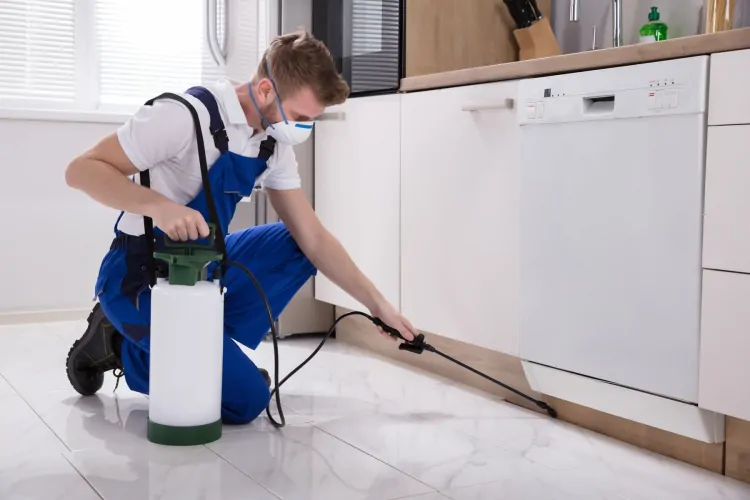Effective Pest Control and Bed Bug Treatment
In this blog, we will explore effective strategies for pest control and highlight proven techniques for eradicating bed bugs.

Pest infestations are a common problem faced by households and businesses worldwide. Among the various pests, bed bugs are particularly troublesome due to their resilience and rapid reproduction. Proper pest control and bed bug treatment are essential to maintain a clean, healthy, and comfortable living environment. In this blog, we will explore effective strategies for pest control and highlight proven techniques for eradicating bed bugs.
What is Pest Control?
Pest control refers to the management and regulation of unwanted creatures like insects, rodents, and other organisms that pose risks to human health, property, and the environment. The goal of pest control is to minimize the impact of pests using safe, effective, and sustainable methods.
Key types of pests include:
-
Insects: Ants, cockroaches, mosquitoes, bed bugs.
-
Rodents: Rats and mice.
-
Other pests: Termites, flies, and spiders.
Pest control methods vary based on the type of pest and severity of infestation, ranging from chemical treatments to natural and preventive measures.
Why Bed Bugs are a Persistent Problem
Bed bugs are small, oval-shaped insects that feed on the blood of humans and animals. They are notorious for their ability to hide in tiny crevices, making them difficult to detect and eliminate. Bed bugs are often found in:
-
Mattresses and bedding
-
Furniture seams
-
Carpets and curtains
-
Wall cracks and electrical outlets
Signs of a bed bug infestation:
-
Small, itchy bites on the skin.
-
Blood stains on sheets or mattresses.
-
Fecal spots or shed skins near hiding spots.
-
A musty odor in heavily infested areas.
Effective Pest Control Strategies
1. Inspection and Identification
A thorough inspection is the first step in pest control. Identify the type of pest, its entry points, and the extent of the infestation. For bed bugs, inspect:
-
Mattress seams
-
Behind picture frames
-
Inside electrical outlets
2. Prevention
Preventive measures are crucial in keeping pests at bay. These include:
-
Sealing cracks and gaps in walls and doors.
-
Proper food storage to avoid attracting pests.
-
Regular cleaning to remove potential hiding spots.
3. Chemical Treatments
Professional pest control services often use insecticides to target specific pests. For bed bugs, chemical sprays, powders, and foggers are common. Ensure treatments are safe for humans and pets.
4. Natural Remedies
Many people prefer eco-friendly pest control methods. Some effective natural remedies include:
-
Diatomaceous earth: A powder that dehydrates and kills pests.
-
Essential oils: Lavender, tea tree, and eucalyptus oils repel insects.
-
Heat treatment: Washing bed linens at high temperatures kills bed bugs and their eggs.
5. Integrated Pest Management (IPM)
IPM combines multiple pest control strategies to achieve long-term results. It emphasizes prevention, monitoring, and using less harmful control methods.
Bed Bug Treatment: Proven Methods
1. Professional Extermination Services
Professional pest control services are the most effective way to handle severe bed bug infestations. Experts use specialized equipment and treatments, such as:
-
Heat treatment: Raising the room temperature to 120°F (49°C) eliminates bed bugs and their eggs.
-
Cryonite treatment: Freezing bed bugs with carbon dioxide snow.
-
Chemical treatment: Applying insecticides to affected areas.
2. DIY Bed Bug Treatments
For minor infestations, do-it-yourself methods can be effective:
-
Vacuuming: Use a vacuum cleaner to remove bed bugs from mattresses, furniture, and carpets. Dispose of the vacuum bag immediately.
-
Steam cleaning: High-temperature steam kills bed bugs on contact.
-
Encasements: Cover mattresses and pillows with bed bug-proof encasements to prevent re-infestation.
3. Use of Pesticides
Choose pesticides specifically labeled for bed bugs. Follow the instructions carefully to ensure safe and effective application. Common options include:
-
Pyrethroid-based sprays
-
Insect growth regulators (IGRs)
4. Monitoring and Maintenance
After treatment, monitor the area for any signs of surviving bed bugs. Place interceptors under bed legs to trap bugs and prevent them from climbing up.
Preventing Future Bed Bug Infestations
Preventing bed bugs requires vigilance and proactive measures:
-
Inspect second-hand furniture: Check thoroughly before bringing it home.
-
Use protective covers: Encase mattresses and pillows to prevent bed bugs.
-
Declutter your space: Reduce hiding spots by keeping your home tidy.
-
Be cautious during travel: Inspect hotel rooms and luggage for bed bugs.
Benefits of Professional Pest Control Services
Hiring professional pest control services offers several advantages:
-
Expertise: Professionals have the knowledge and experience to handle various pests effectively.
-
Advanced techniques: They use advanced tools and treatments not available to the public.
-
Safety: Proper handling of chemicals ensures safety for your family and pets.
-
Long-term results: Professionals provide preventive measures to minimize future infestations.
Why Timely Pest Control is Important
Delaying pest control can lead to:
-
Health risks from diseases carried by pests.
-
Property damage caused by termites or rodents.
-
Increased infestation levels, making treatment more challenging and expensive.
Conclusion
Pest control and bed bug treatment are essential for maintaining a safe and comfortable environment. While DIY methods can help with minor infestations, professional pest control services are indispensable for severe cases. Preventive measures, regular inspections, and prompt action are key to keeping pests, especially bed bugs, at bay.
What's Your Reaction?














